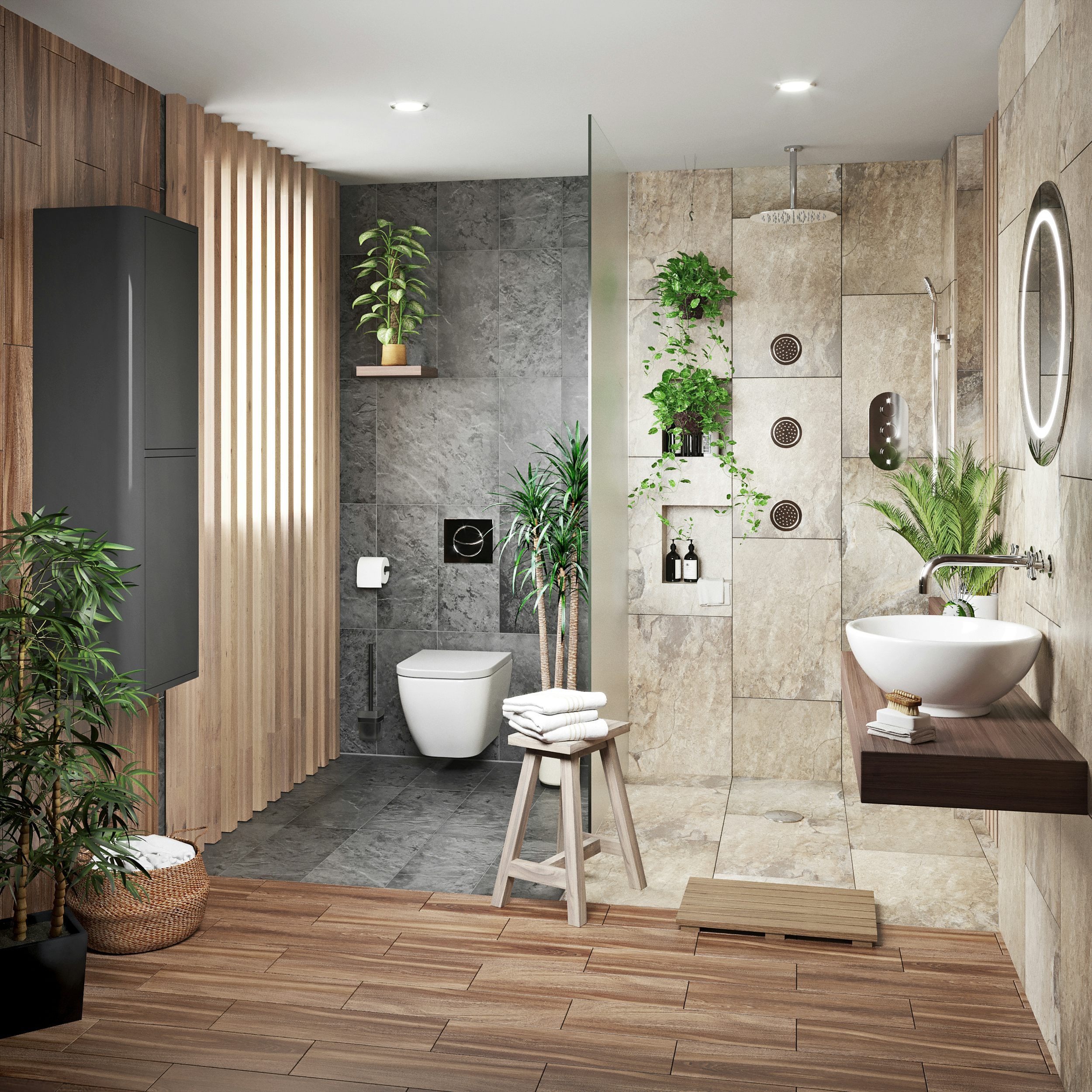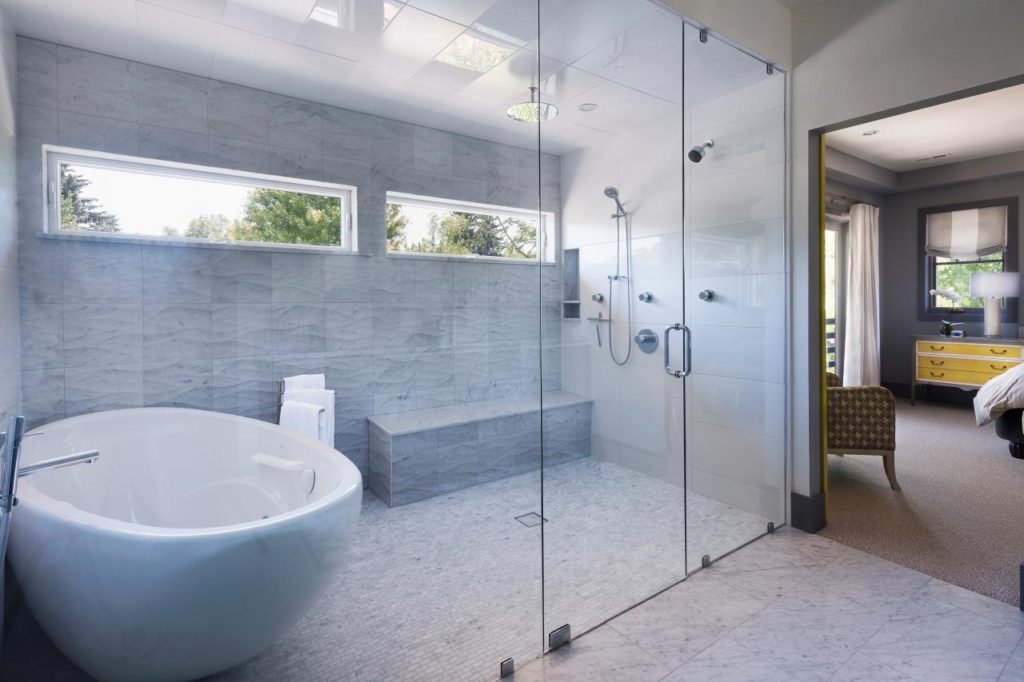Planning and Design Considerations: Small Wet Room Bathroom Designs

Designing a small wet room bathroom presents unique challenges and opportunities. The limited space requires careful planning and strategic design choices to maximize functionality and create a comfortable and visually appealing space.
Maximizing Space and Functionality
Maximizing space and functionality in a small wet room bathroom is crucial. Here are some key design principles to consider:
- Choose compact fixtures: Opt for space-saving fixtures like a wall-mounted toilet, a corner sink, or a shower with a sliding door. These choices will help to free up valuable floor space.
- Utilize vertical space: Incorporate tall cabinets or shelves to maximize vertical storage. A mirrored cabinet above the sink can create the illusion of more space and provide convenient storage for toiletries.
- Consider a walk-in shower: A walk-in shower eliminates the need for a shower door, creating a more open and spacious feel. This is particularly beneficial in small bathrooms.
- Integrate storage solutions: Utilize built-in storage solutions like niches within the shower wall or under the sink to keep toiletries and other items organized and out of sight.
- Maximize natural light: If possible, use a large window or skylight to bring in natural light. This will make the bathroom feel larger and brighter.
Suitable Materials for Wet Room Environments
The wet room environment requires materials that are durable, moisture-resistant, and easy to maintain. Here are some suitable options:
- Flooring: Waterproof tiles, natural stone (sealed), or resin flooring are excellent choices for wet rooms. These materials are durable, easy to clean, and resistant to moisture damage.
- Walls: Waterproof plasterboard or tile are common choices for wet room walls. These materials are resistant to moisture and can be easily cleaned.
- Shower tray: A pre-fabricated shower tray made of acrylic, composite, or stone resin is a good choice. These trays are waterproof and provide a smooth, easy-to-clean surface.
- Fixtures: Choose fixtures made of stainless steel, chrome, or other moisture-resistant materials. These materials are durable and easy to clean.
Sample Wet Room Bathroom Layout, Small wet room bathroom designs
This sample layout demonstrates how to incorporate essential elements in a small wet room bathroom:
- Shower: A walk-in shower is located in the corner of the room, maximizing space and providing a spacious showering experience.
- Toilet: A wall-mounted toilet is positioned opposite the shower, saving valuable floor space and creating a clean and modern aesthetic.
- Sink: A compact corner sink is placed next to the toilet, optimizing space utilization and offering a convenient location for handwashing.
- Storage: A tall cabinet is installed above the toilet, providing ample storage for towels, toiletries, and other bathroom essentials.
Shower and Wet Room Features

A well-designed shower enclosure is essential for creating a functional and stylish wet room. Selecting the right type of shower enclosure depends on the size and layout of the wet room, personal preferences, and budget.
Shower Enclosure Selection
Choosing the right shower enclosure for a small wet room involves considering various factors. A walk-in shower offers easy access and a spacious feel, ideal for small bathrooms. Corner showers maximize space utilization, while alcove showers are budget-friendly and provide a sense of enclosure.
- Walk-in Showers: These showers are characterized by their open design, typically featuring a single panel or frameless glass enclosure. They provide a seamless transition from the bathroom floor to the shower area, creating a spacious and accessible feel, especially beneficial for small wet rooms.
- Corner Showers: Corner showers utilize a space-saving design, fitting into the corner of the bathroom. They often feature two glass panels that meet at a 90-degree angle, maximizing space efficiency.
- Alcove Showers: Alcove showers are enclosed on three sides by walls, creating a traditional shower experience. They are generally more affordable than walk-in or corner showers and are well-suited for smaller bathrooms.
Shower Types and Their Advantages and Disadvantages
- Walk-in Showers:
- Advantages: Easy access, spacious feel, modern aesthetic, suitable for wheelchair users, can be customized with various materials and finishes.
- Disadvantages: May require more space than other shower types, can be more expensive, potential for water splashing outside the shower area if not properly sealed.
- Corner Showers:
- Advantages: Space-saving, visually appealing, available in various styles and materials, suitable for small bathrooms.
- Disadvantages: Can be more difficult to clean than other shower types, limited space for showering, may require custom installation.
- Alcove Showers:
- Advantages: Affordable, traditional design, enclosed space for privacy, easy to install.
- Disadvantages: Can feel cramped, limited space for showering, may not be suitable for all bathroom layouts.
Wet Room Floor Design and Drainage
Creating a properly sloped wet room floor with an efficient drainage system is crucial for preventing water accumulation and ensuring a safe and comfortable showering experience.
- Slope: The floor should slope towards the drain at a minimum gradient of 1:80 (1 cm per meter). This gentle slope ensures that water flows smoothly towards the drain, preventing water pooling and potential slipping hazards.
- Drainage: A centrally located drain is ideal for small wet rooms, providing efficient water removal. The drain should be positioned in the lowest point of the floor slope, ensuring optimal water drainage.
Ventilation and Waterproofing Techniques
Proper ventilation and waterproofing are essential for maintaining a healthy and hygienic wet room environment.
- Ventilation: A well-ventilated wet room helps to prevent moisture buildup, mold growth, and unpleasant odors. Install an extractor fan that vents directly to the outside to effectively remove steam and humidity.
- Waterproofing: A robust waterproofing system is crucial for preventing water damage to the walls, floor, and surrounding structures. Apply a waterproof membrane to the walls and floor, ensuring a seamless and watertight seal.
Small wet room bathroom designs are all about maximizing space and creating a sense of openness. To achieve this, consider incorporating sleek and minimalist fixtures like floor standing taps , which add a touch of sophistication while freeing up valuable counter space.
This approach not only enhances the visual appeal of your wet room but also contributes to a more spacious and airy feel.
Small wet room bathroom designs often feature sleek, minimalist aesthetics. One popular choice for flooring in these spaces is LVT, or luxury vinyl tile. LVT offers the look of natural materials like stone or wood, but with the added benefit of being waterproof and easy to clean.
If you’re interested in installing LVT flooring in your bathroom, you can find a detailed guide on how to install lvt flooring in bathroom. Once installed, LVT can help to create a sophisticated and functional wet room space.